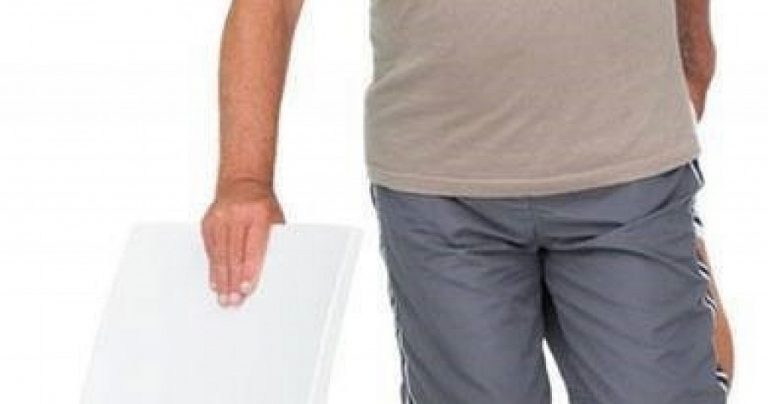
Better Balance Now!
As we age the ability to maintain balance becomes more difficult. Many factors influence good balance, some of them are biological, and some we are able to influence and are able to improve. Balance and stability are important factors for aging adults to maintain a healthy lifestyle. Loss of balance is the primary factor in falls, which often results in serious injuries.
Good balance is dependent on sensory input from the eyes, the correct functioning of the balance system in the inner ear, posture and center of gravity and our ability to sense the position and movement in our feet, legs and arms. Vision affects the balance system, as the eyes send messages to the brain telling us where objects are in space.
Aging adults are affected by a loss of muscle mass and strength. This is associated with an increased risk of falls and hip fractures. It also has a great effect on maintaining a healthy lifestyle. Weakness in the ankle musculature may cause difficulty in recovering lost balance more quickly. Strong quadriceps muscles are necessary for good balance and walking. Evidence shows the strength and aerobic training can lead to a reduction in falls.
Loss of flexibility occurs with age. This may lead to difficulty climbing stairs, transferring from sitting to stand and or getting out of bed without difficulty. Much of the loss of flexibility is due to inactivity. Flexibility exercises, stretches, gentle yoga will help improve the flexibility of major muscle groups and therefore improve one’s ability to complete everyday activities.
Postural changes develop as people age but not because they age. Rounded shoulders, forward head postures, increased thoracic curves in the spine are common postural changes. These changes affect the center of gravity in the body moving it forward. With changes in the center of gravity, older adults are more prone to loss of balance and an increased risk of falls.
Medications also contribute to the deterioration of the balance system. Research has shown that adding new medications in the previous two weeks increases the risk of falling.
There are many ways we can adapt to the changes in our bodies as we age.
Some helpful tips:
- Promote safety in the home by using non-skid surfaces, eliminating area rugs & improve lighting in the home
- Get a yearly eye exam
- Proper nutrition and hydration
- Know the side effects of your medication
- Use caution with pets running around in your home
- Different forms of exercise, such as strengthening exercises, flexibility and stretches, postural exercise, yoga, tai chi, and aerobic exercise such as walking, will all contribute to decreasing the risk of falls and improve your balance.
Guidelines from The American College of Sports Medicine
1. Healthy adults under the age of 65 should aim for:
- Moderate intense cardiovascular exercises 30 minutes a day (aerobic exercise), five days a week or vigorous intense exercises 20 minutes a day, 3 days a week and strengthening-exercises twice a week
- Flexibility or stretching exercises are also recommended a minimum of 2-3 days a week
2. Healthy adults 65 years or older:
- Low-to-Moderate aerobic exercises, 30 minutes a day, 5 times a week and gentle strengthening-exercises (very light weights), 2- 3 times a week
- Flexibility or stretching exercises at a minimum of 2-3 times a week
3. Types of Aerobic and Low-to-Moderate Exercises:
| Moderate Intense Aerobic Exercises | Low-to-Moderate Aerobic Exercises |
| brisk walking | water exercises |
| running | gardening |
| swimming | housework |
| cycling; spinning classes | dancing, yoga, tai chi |
·
-
- If you want to determine your fitness level, refer to the reference guide from The Centers for Disease Control and Prevention: http://www.cdc.gov/physicalactivity/everyone/measuring/index.html.
- For beginners, you can simply start out by learning the basics of the talk test, which is a rule of thumb for doing moderate-intensity activity and you can still talk, but not sing during an activity. However, if you are doing a vigorous-activity you would want to learn how to find your target heart rate and determine what intensity range you should be exercising at for optimal cardiac performance.
- Check out the Stay Healthy Website to determine a simple way to find your target heart rate at www.cancer.org/healthy/toolsandcalculators/calculators/app/target-heart-rate-calculator. Once you find your target heart rate, wearing a heart rate monitor will make it easier to monitor your desired rate.
If you would like to improve your current level of fitness, but still have questions about how to begin a safe exercise program if you had an injury or illness, our experienced and dedicated licensed physical therapists can help you get started. With Direct Access a prescription is not required to be evaluated. Visit our Website: www.ivyrehab.com to find a location near you and to learn more about Direct Access.
The medical information contained herein is provided as an information resource only, and does not substitute professional medical advice or consultation with healthcare professionals. This information is not intended to be patient education, does not create any patient-provider relationship, and should not be used as a substitute for professional diagnosis, treatment or medical advice. Please consult with your healthcare provider before making any healthcare decisions or for guidance about a specific medical condition. If you think you have a medical emergency, call your doctor or 911 immediately. IvyRehab Network, Inc. disclaims any and all responsibility, and shall have no liability, for any damages, loss, injury or liability whatsoever suffered as a result of your reliance on the information contained herein.